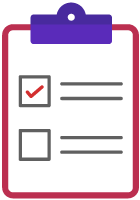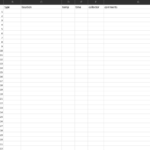Home > Sampling > Environmental Sampling
Environmental Sampling


Target Objectives
- Determine if the investigation warrants environmental sampling
- Determine what environmental samples to collect
- Utilize best practices for collection and transport of environmental samples

Strategic Check
Prior to collection
- Consult with the laboratory regarding upcoming environmental surface sampling and determine if they have environmental sampling testing protocols
- Pack environmental sampling kit supplies. Refer to the "Environmental Sampling Checklist"
- Review the investigation notes to determine if environmental sampling is needed:
- Is there a known/suspected etiology?
- Has a food item(s) been implicated as part of the outbreak?
During collection
- Choose sampling sites based on processes and pathogen characteristics
- Avoid contamination by using sterile/aseptic sampling equipment (i.e. sponges, swabs, Whirl-Paks, buffer solution, gloves)
- Properly label samples, which may include:
- Collection date/time
- Who collected the sample
- Establishment name
- Specific area/sample site (i.e. meat slicer, hand-sink drain)
- Sample ID number or unique identifier
After collection
- Notify the lab to expect incoming environmental samples
- Submit samples to the appropriate laboratory as soon as possible after collection
- Complete the chain of custody form

Tips
- Use knowledge of the etiologic agent or implicated food to help inform the sampling site
- Based on knowledge of the outbreak, the establishment may have cleaned or sanitized more heavily prior to your sampling. If you suspect this and it fits with the characteristics of the pathogen, move out to other sampling zones
- Understand the four zones of environmental sampling (Zone 1: all direct food contact surfaces, Zone 2: areas directly adjacent to zone 1, Zone 3: The area immediately surrounding zone 2, Zone 4: The areas immediately surrounding zone 3). Think about what pathogens would be found in each zone.
- During collection, try to work in teams of two to four: a sampler, a person logging and marking sample containers, and a person photographing the sampling.

Toolkit
Environmental Sampling Log (XLS)
(click on the document below to download it)

